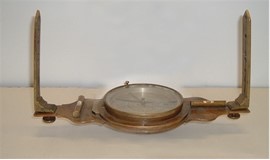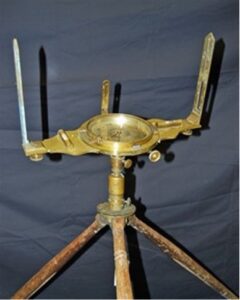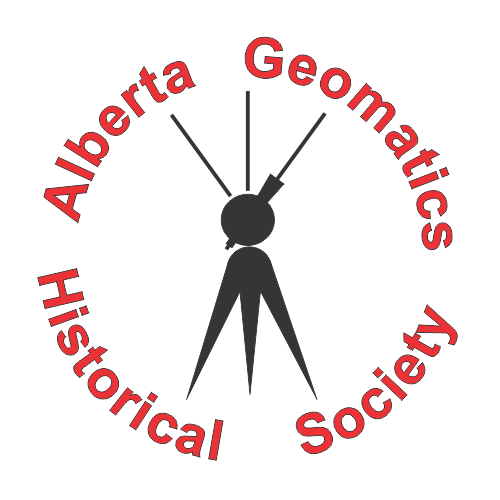
02. Circumferentors – Made in Canada before Confederation
By Gordon Olsson
Circumferentors were used to survey Canadian settlements and international boundaries during the 1800s. They were used to observe direction with reference to magnetic north. Vertical sights enabled accurate aiming. The instrument is oriented to magnetic north using the compass needle, then the horizontal circle is locked. The vertical sights are then used to take aim at the targets. Magnetic directions are read on the 360-degree horizontal circle, from which angles can be derived.
Circumferentor is an English term. If similar instruments were manufactured in the USA, they were usually called surveyor’s compasses.
Two circumferentors have found their way into the ALSA collection. They were both manufactured in Canada and the manufacturer described them as circumferentors.


Circumferentor marked “Hearn and Potter; Toronto, CW.” CW stands for Canada West, indicating that the instrument is pre-confederation, thus over 150 years old. It has been in the ALSA office prior to the collection being formalized.
The source is unknown
ALSA 2006.06.01

This circumferentor was owned by Edward Burwash and used for mapping and geological survey work in the Lake Athabasca area in 1912. It was donated to the ALSA by Robert Burwash, nephew of Edward in 2011. Robert wrote “I have decided its most promising future use is with the Alberta Land Surveyors Group.” Inscribed on the face of the circumferentor is “Potter, Toronto, C.W.” Since it is inscribed by the name “Potter” with no given name or initial it was likely made during the period 1860 to 1867 – see the paragraphs below about Augustus Potter and Charles Potter.
Donated by Ronald A. Burwash.
ALSA 2011.01.01
Tripod – ALSA 2011.01.02
Both of the circumferentors described above have the name “Potter” on them. Augustus Potter and Charles Potter were brothers and both were trained as instrument makers in Britain by their father. In 1853, Charles immigrated to Canada and immediately started a partnership with William Hearn, a watchmaker and jeweller at 54 King Street in Toronto. The Hearn & Potter partnership dissolved in 1857. Therefore the first circumferentor described above would have been made during the period 1853 to 1857.
It is not entirely clear from the sources below, but it appears that after 1857, Charles Potter and his brother Augustus worked together until 1860 when the brothers parted. Augustus continued the business under the name A.F. Potter and in 1865 he returned to London.
After 1860, Charles Potter worked at various shops on King Street and, in 1866, started doing business under his own name. So, the second instrument described above would have been made during the period 1860 to 1867 (1867, of course, being the date of Confederation).
Sources of Information:
- Ingenium, Canada’s Museum of Science and Innovation
- Surveying Instrument Makers of Central Canada, 1993, by Randall C. Brooks National Museum of Science and Technology, and William J. Daniels.
- Charles Potter, Optician and Instrument Maker, 1992, by Julian A. Smith.
- Aspects of Scientific Enterprise in Victorian Torontoby William J. Daniels, OLS, The Ontario Land Surveyor, Spring 2005
Author: Gordon Olsson, ALS (Hon. Life)
August 25, 2021
Copyright 2024 © Alberta Geomatics Historical Society
